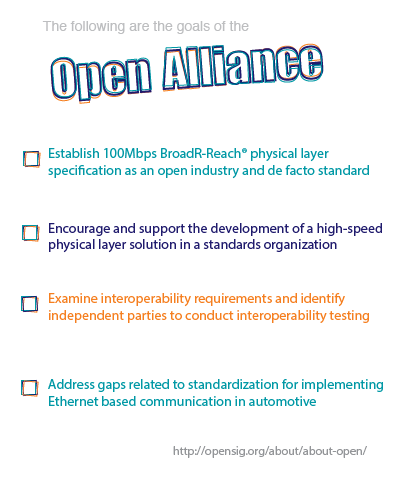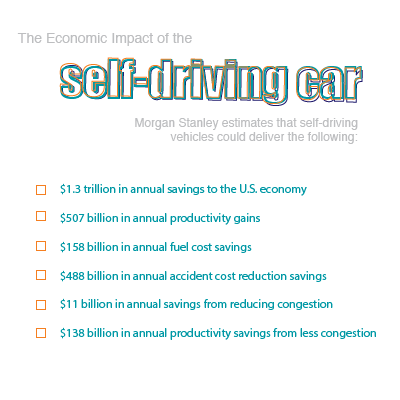Though skeptics resist the idea of the self-driving car, the car of the future will not disappoint thanks to the growing consensus among automakers to make Ethernet the standard connectivity solution for cabling in the internal circuitry of an automobile. Broadcom’s Senior Director of Product Marketing contends that “Carmakers have come to a collective conclusion” to embrace automotive Ethernet. “They don’t want another proprietary technology”.
The Open (One-Pair Ether-Net) Automotive Alliance and IEEE’s 802.3 Study Group, are working towards the same goal of standardizing automotive Ethernet and implementing it as the backbone of a car’s circuitry system. The Open Automotive Alliance aims to “address industry requirement for improving in-vehicle safety, comfort, and infotainment” and has attracted more than 30 automaker partners.
The non-profit organization was founded byAudi, General Motors, and Hyundai with the intention of facilitating the “wide scale adoption of Ethernet-based networks as the standard in automotive networking applications”. IEEE’s 802.3 working group is specifically attempting to finalize automotive specifications for 100 Mbps Ethernet and 1 Gbps Ethernet.
Utilizing unshielded twisted pair cables in automobiles will make it possible for automakers to reduce cabling costs and reduce the overall weight of a car. Broadcom argues that the “adoption of in-car Ethernet can reduce connectivity costs by up to 80 percent, while reducing wiring weight by around 30 percent – shaving up to 100 pounds from your car.”
Enhanced security features will need to rely on dependable connectivity to support Advanced Driver Assistance Systems (ADAS) safety mechanisms which include “Collision and drift avoidance systems, rear blind spot and 360° vision systems, Night vision assistance, and radar systems.” These features will no longer represent a point of differentiation for automakers and will instead become a standard.
The car of the future will need to deliver the high bandwidth demands capable of simultaneously running internal diagnostics for a car’s maintenance, software updates, security features to prevent hacker attacks, support e-calls, e-payment features, all the while offer seamless access to an infotainment system.
For the same reason that IT professionals utilize Ethernet to build networks, car manufacturers will be able to reduce cable clutter with power and data delivered via a single cable. IEEE’s undertaking of the project will create standards characteristic of all other Ethernet standards –interoperable and backwards compatible specifications.
Automakers are also seeking to utilize Ethernet as the “backbone and lifeline for electrical and electronic (E/E) system architecture”. They’re hoping to centralize a car’s several control units into one box that will function as the “brain”. Ian Riches, director of global automotive practice at Strategy Analysis estimates that “in 2020 around 120 million Ethernet nodes will be fitted to light vehicles produced that year.”
As Ethernet inaugurates the advent of the Internet of Things for cars, this can only push towards the development of the self-driving car as well.
But even if the commercializing of the self driving car doesn’t occur in our lifetime, the car of the future will not disappoint.
Note: IEEE has officially finalized standardization for 802.3bw, the Ethernet standard for automobiles since the publishing of this article. Click here to find out more about 802.3bw.
Questions? Hesitations? Take advantage of our networking expertise and ask us anything! Click on the offer below:





